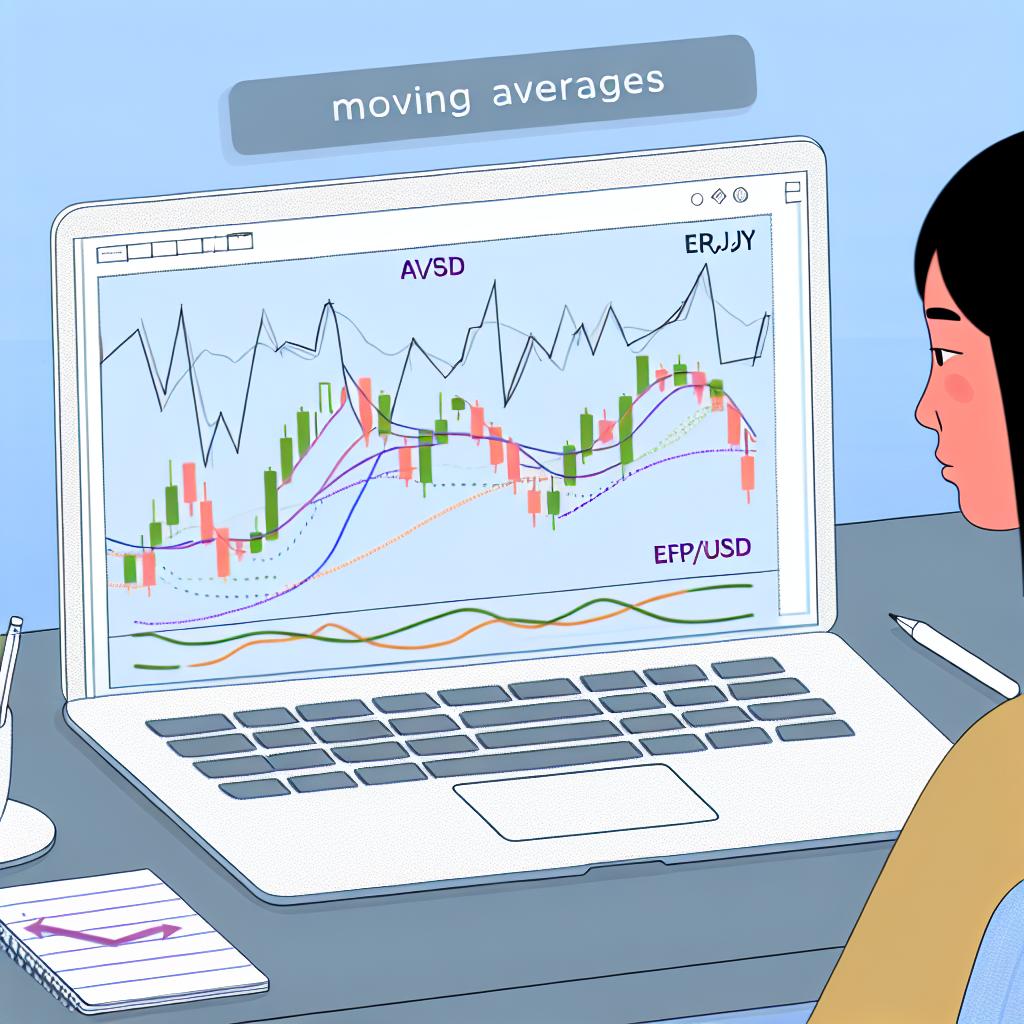Introduction to Forex Trading with Moving Averages
Forex trading, or foreign exchange trading, represents the world’s most traded market, involving the buying and selling of world currencies. The primary objective for traders is to profit from the movements in currency exchange rates. This becomes feasible by leveraging a set of strategies, analytical techniques, and tools that aid in predicting future price movements. Among the myriad of available tools, moving averages stand out for their straightforwardness and efficacy.
Understanding Moving Averages
The concept of the moving average (MA) is rooted in statistical analysis. By considering price data over a specified time span, it helps in smoothing price fluctuations, consequently enabling traders to grasp price trends more clearly. Moving averages come in various forms, but two types are predominantly used:
1. Simple Moving Average (SMA): The basic idea behind the Simple Moving Average is to calculate the mean of the past closing prices over a certain period. For instance, a 10-day SMA calculates the sum of the closing prices over the last 10 days and divides it by 10. This average gives traders a sense of the average closing price during that timeframe.
2. Exponential Moving Average (EMA): This variant is somewhat similar to the SMA but places a greater emphasis on more recent prices. By doing so, it becomes more sensitive to new price information, providing traders with more immediate and responsive signals, making it a favorite among those seeking a faster reaction to market changes.
Moving Averages as Trend Indicators
One of the primary uses of moving averages in forex trading is as a mechanism to identify and confirm prevailing market trends. Here is how traders usually approach this:
Analyzing the Slope: The direction in which the moving average leans or trends is vital.
– If the moving average is trending upwards, traders interpret this as an indication of a potential uptrend, suggesting that buying might be considered.
– On the contrary, a downward movement might hint at a downtrend where selling could be contemplated.
Traders might employ multiple moving averages of varying lengths — like a short-term 20-day MA and a longer-term 50-day MA. By scrutinizing these, experts can pinpoint crossover points. These points occur where the shorter moving average crosses above or below the longer one, signifying possible reversals or the onset of new trends. Crossovers thus serve as important buy or sell signals.
Trading Strategies Using Moving Averages
Moving averages are not merely passive indicators; they are active components of sophisticated trading strategies. One widely adopted technique is the Moving Average Crossover Strategy. Here’s a deeper look into this strategy:
Moving Average Crossover Strategy: This strategy encompasses the usage of two MAs of different durations. When a short-term moving average intersects and rises above a long-term moving average, this crossover signals a possible buying point. Conversely, if the short-term average dips below the long-term average, it might be an indication to sell.
The utilization of moving averages as dynamic levels of support and resistance is another pivotal approach. In technical analysis, a moving average can act like a barrier — preventing the price from moving further. Traders observe these levels since prices frequently rebound from them, offering opportunities for trading actions.
Advantages of Using Moving Averages
The primary merit of incorporating moving averages into forex trading resides in their ability to filter out the noise inherent in fluctuating price data. By providing a smoothed-out representation of price behavior, trends become more apparent, simplifying decision-making processes. This characteristic benefits both novices in the trading arena and seasoned traders, enabling clearer visualization of price movements without the distraction of minor fluctuations.
Limitations
While beneficial, moving averages are not without their limitations. It’s important to note that they are lagging indicators — primarily dependent on past price information. This means they may not furnish quick enough alerts in rapidly changing market environments. Hence, traders should consider integrating moving averages with other indicators and methodologies to devise a comprehensive trading blueprint that can adapt to different market conditions.
Further Learning
For those keen on further exploring forex trading and the application of moving averages, there are plethora of opportunities for further engagement. Venturing into various trading platforms and educational resources can enhance one’s knowledge base. A particularly effective way to practice without financial risk is through demo trading accounts, where aspiring traders can employ real-world strategies in simulated environments. Expanding your understanding of forex dynamics will inevitably bolster the ability to make calculated trading decisions. For those eager to advance their education, consider this resource: click here.
Comprehending and implementing moving averages into trading regimens enhances the trader’s toolkit, leading to more informed decisions within the forex marketplace. It’s paramount to stress once more that the triad of comprehensive research, dedicated learning, and regular practice forms the cornerstone of successful trading.
This article was last updated on: June 30, 2025

